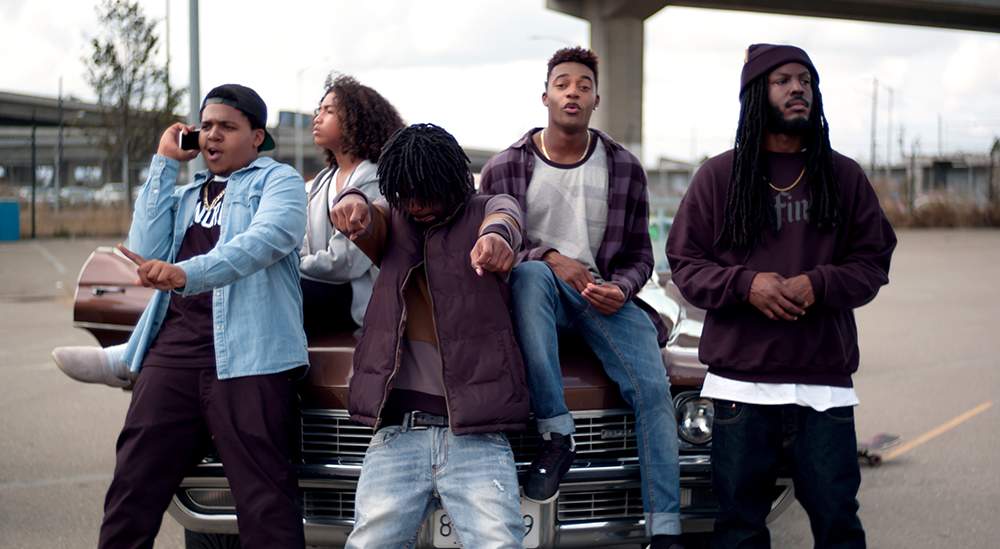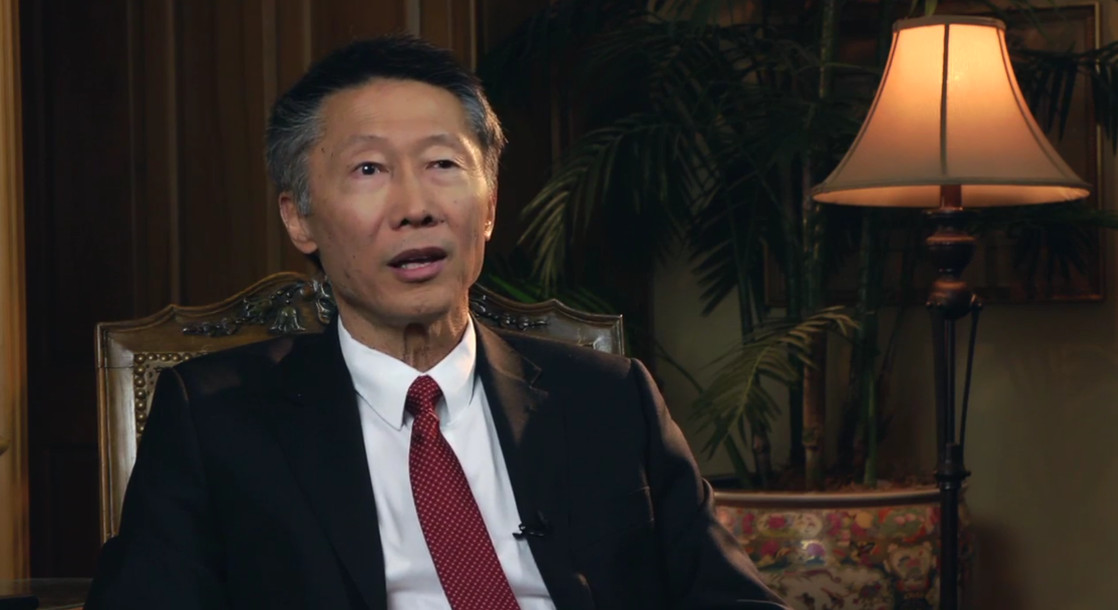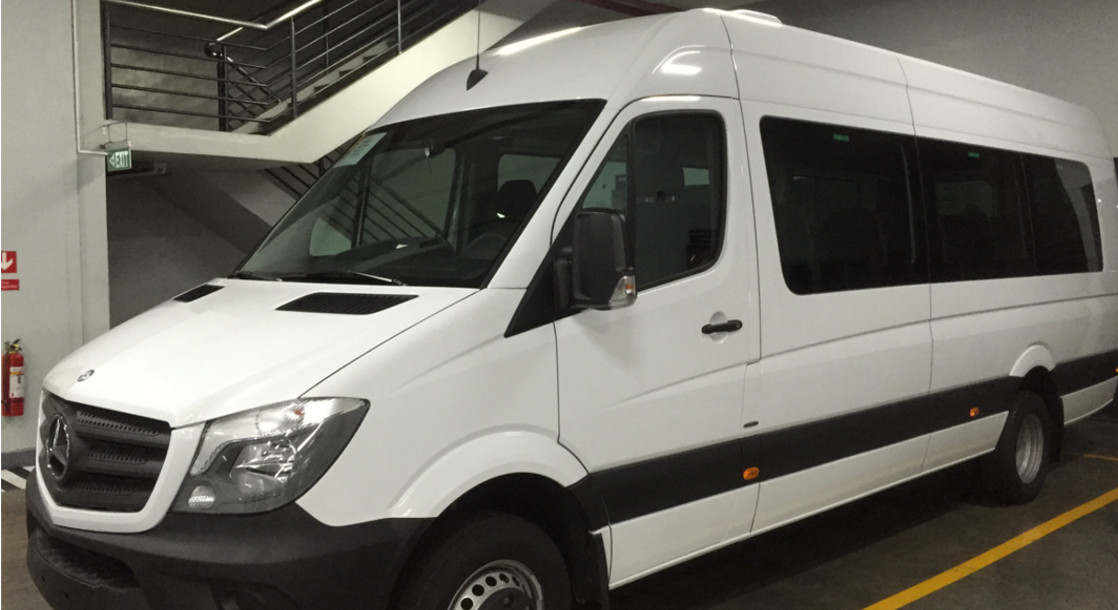In the early ’90s, three powerful motion pictures solidified what growing up in the hood was like. John Singleton’s Academy Award nominated Boyz n the Hood (1991) led the way, chronicling the troubled lives of South Central Los Angeles youngsters. Whereas the entertaining Kid ’N Play comedy House Party (1990) was about suburban black kids whose biggest problems were dodging cartoonish school bullies and sneaking out of the house to go dancing, the friends in Boyz n the Hood suffered from the constant stress of violent neighborhood gang activity and crooked police officers with grudges.
Also bursting through was Juice (1992), an East Coast drama about teenagers out to earn respect in the streets. Directed by Ernest Dickerson, cinematographer of many early Spike Lee joints, it made Tupac Shakur a star. The Hughes Brothers’ Menace II Society (1993) was another milestone, a bleak and riveting look at an L.A. torn apart by gangs that was as poetic as it was tragic.
This was not the first time these kind of stories hit the big screen. Back in the mid ’70s, films like Cooley High, Cornbread, Earl and Me (both from 1975), and The Education of Sonny Carson (1974) also vividly depicted the struggles of low-income black youth. It continued in the ’80s with low-budget movies like Wild Style (1983), which incorporated the hip-hop movement into its plots. But what made the wave of hip-hop-influenced coming-of-age-in-the-hood movies in the ’90s different was that they no longer were overly concerned with the spectacle of graffiti, DJing, and breakin’ and were able to explore more strongly social issues that were prominent in rap music but exploited or ignored in most mainstream movies.
Thanks to the overwhelming success of Boyz n the Hood, films that would have never been given a chance proliferated the market, from the raw, no-budget Straight Out of Brooklyn (1991) to indie dramas like Zebrahead (1992), Fresh (1994), and Squeeze (1997). Furthermore, there were films about young women of color, like Just Another Girl on the I.R.T. (1992), Mi Vida Loca (1993), and Girls Town (1996), that dealt with teen pregnancy, single motherhood, and rape.
By the end of the decade, The Wood (1999) showed that not everybody who grew up in the hood ended up dead or in jail. By the year 2000, the genre had evolved to the point where art films like George Washington and Our Song could exist amongst a movie like ATL (2006), which showed how the elite, working, and lower classes intertwine.
Just a few years ago, however, small films like Gimme the Loot (2012) and Spike Lee’s Red Hook Summer (2012) were dwarfed at the box office by Spring Breakers (2013), a film about a bunch of white people who think they’re living in a rap music video.
Recently, the coming-of-age-in-the-hood movie has made a bit of a comeback, and we see some of the stereotypical trappings begin to fall. In Dope (2015), for instance, we see the hood through a nerd’s point of view. The Land (2016) demonstrates that kids of color aren’t just into lowriders but also like skateboarding as much as white kids do. And in the new movie Kicks (2016), there are thematic touches of magic realism involving an imaginary astronaut floating amongst the urban Bay Area landscape.
Yet, Dope and Kicks both had difficulty getting funding, despite having modest budgets. “It was surprising at our budget level that no one was willing to take the risk,” Dope director Rick Famuyiwa said in an interview with Deadline. Kicks director Justin Tipping told IndieWire: “Pulling the finances together to fund a film like this is an art form within itself,” before adding that the money ultimately came from “various sources around the world.” (Dope reportedly cost $7 million to make and has grossed approximately $18 million worldwide.)
Part of the problem could be the movie industry’s lack of diversity, which it apparently doesn’t want to fix. According to a study that analyzed the top 100 films of 2015, “73.7 percent of characters were white, while only 12.2 percent were black, 5.3 percent Latino, and 3.9 percent Asian—and those percentages haven’t changed since 2007.”
There’s also the notion that only people of color will be able to relate to films like Crooklyn (1994) or Fruitvale Station (2013), but “white movies” like Stand by Me (1986) or Good Will Hunting (1997) don’t seem to have this problem.
But we also have to ask ourselves if movies about growing up in the hood have anything new to say? The answer is undoubtedly yes. There are plenty of people who have experienced more than just drugs, drive-bys, and other crime-related drama. Aside from nostalgia there’s something gripping about revisiting our journeys into adulthood because ultimately it’s about learning about life. But what works against new hood movies is the perception that the story has been told over and over again. That’s because the same problems plaguing impoverished communities for decades—gangs, unemployment, police brutality—are still going on today. The kid getting jacked for his sneakers in Kicks is the same thing that was happening back in the ’80s when the original Air Jordans first came out.
But is there something subconsciously at work here, too? Have we grown accustomed to the stereotypes? Do we crave an element of danger in stories set in the hood? Take Spare Parts (2015), which is based on a true story about undocumented Latino high school students who compete in a robotics competition. Marketed as an underdog story with comedic moments, the film was mostly overlooked. It has some similarities to Stand and Deliver (1988), another movie based on actual events that was more successful. There, the plot revolves around high school teacher Jaime Escalante teaching his at-risk students math. Did the movie do better because the ads played up Lou Diamond Phillips’ gangbanger character? The studio obviously knew that cholos are easier to market than calculus, but would we have watched without him? Can films about growing up in the hood actually have the chance to grow?











